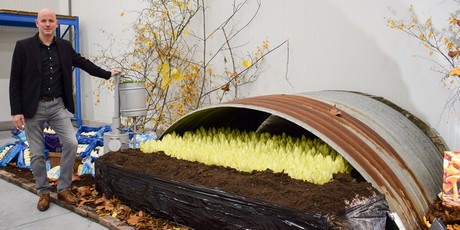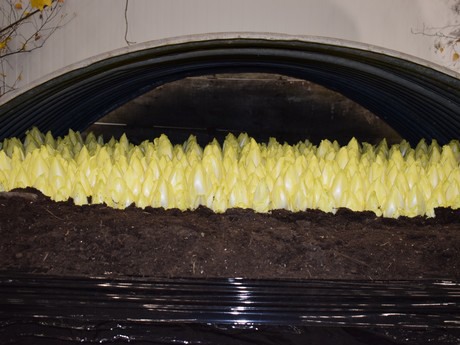Although chicory used to be a proper winter vegetable, thanks to hydro-production it’s eaten year-round nowadays. It’s also becoming a more diverse product. “In the past, we had classes 1 to 3, but now we also have red chicory and chiconette. When you buy boxes of 2.5 kilos, you can choose from stalks of 30 and 60 grammes. The block at auction has become large in recent years.”

As the fourth generation of wholesaler’s FV Lesage j en Zoon, Yves Lesage knows all about chicory, and over the years he became very familiar with the market. As of December, Yves works with Sebrechts, for which he takes care of buying and selling chicory. “Chicory is currently in large supply at auction. A lot is bought both abroad and domestically,” he says. “In winter, consumers prefer traditional soil chicory. It’s a bit more bitter, but more expensive as well. Yet there’s hardly a price difference with chicory from hydro-production.”
EPS crates and flow-packs
Most of the chicory is supplied in EPS crates. Besides, the wholesaler also supplies export crates, boxes of 2.5 kilos and bags of 1 and 0.5 kilo. “For soil chicory, supermarkets ask for punnets or flow-packs of 4 or 5 pieces. Consumers don’t just like seeing what they’re buying, these bags have also been developed in such a way that the chicory can endure daylight better, thus turning green less quickly.”

Preferences per region
The fields in which the chicory roots are grown can be found around Leuven, Kampenhout and Haacht in Belgium. After the roots are harvested they’re either placed in trays (hydro-production) or in soil under tunnels for traditional production. They develop white heads in the dark. Each region has a different preference regarding size, according to Yves. “In Brussels they prefer slightly smaller chicory, while it can be a bit larger in Antwerp. It depends on the buyer: restaurants want smaller sizes, so they can be served whole.” Although we’re most familiar with the white vegetable combined with potatoes or a salad, other uses are also possible. “For example, I have a customer who regularly buys a few hundred kilos of class 2 and class 3 to turn into soup. I recently saw a recipe for chicory pizza, it looked delicious,” Yves smiles.
More information:
FV Lesage j en Zoon
Yves Lesage
yves.lesage@telenet.be
